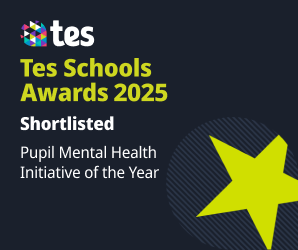- Home
- Learning
- Examinations
- Exam Results
Exam Results
For details about our exam results, please see the Department for Education performance tables here. These show the most recent results.
Key Stage 5 results
2024 outcomes
|
Academic average point score |
31.95 |
|
Academic average point score expressed as grade |
C |
|
Academic progress score |
0.19 |
|
Applied General average point score |
31.95 |
|
Applied General average point score expressed as grade |
Dist- |
|
Applied General progress score |
0.24 |
Additional Key Stage 5 results
|
Retention |
100% |
|
Students progressing to education or employment |
80% |
IB subjects world comparison
| Actual Grades | cohort | %3+ | %4+ | %5+ | %6+ | SKA IB average grade | World Average 2023-24 |
|---|---|---|---|---|---|---|---|
| Average IB | 91% | 87% | 55% | 22% | 4.7 | ||
|
IB Biology HL |
3 | 100% | 67% | 33% | 0% | 4.0 | 4.4 |
| IB BM HL | 16 | 100% | 100% | 63% | 31% | 5.1 | 4.9 |
| IB BM SL | 3 | 100% | 100% | 67% | 0% | 4.7 | 4.9 |
| Ib Chemistry HL | 3 | 100% | 100% | 100% | 33% | 5.3 | 4.7 |
| IB Chemistry SL | 1 | 0% | 0% | 0% | 0% | 2.0 | 4.2 |
| IB DT HL | 3 | 100% | 67% | 0% | 0% | 3.7 | 4.6 |
| IB English HL | 18 | 100% | 100% | 56% | 33% | 4.9 | 4.6 |
| IB Film HL | 21 | 95% | 95% | 62% | 19% | 4.8 | 4.5 |
| IB French HL | 2 | 100% | 100% | 100% | 0% | 5.0 | 5.3 |
| IB Geography HL | 3 | 100% | 100% | 67% | 67% | 5.3 | 5.2 |
| IB History HL | 21 | 100% | 100% | 71% | 24% | 5.0 | 4.4 |
| IB History SL | 3 | 100% | 100% | 0% | 0% | 4.0 | 4.7 |
| IB Digital Society HL | 4 | 75% | 75% | 25% | 25% | 4.7 | 4.4 |
| IB Maths HL | 10 | 90% | 70% | 50% | 20% | 4.3 | 4.4 |
| IB Physics HL | 7 | 100% | 57% | 29% | 14% | 4.0 | 4.9 |
| IB S&CA HL | 20 | 100% | 100% | 75% | 30% | 5.0 | 4.9 |
| IB Theatre HL | 3 | 100% | 100% | 100% | 0% | 5.0 | 4.9 |
| IB Visual Arts HL | 8 | 100% | 88% | 25% | 13% | 4.3 | 4.2 |
| IB Visual Arts SL | 1 | 0% | 0% | 0% | 0% | 4.0 | 3.9 |
| %e+ | %c+ | %A/a* | ||
|---|---|---|---|---|
| LIBF Diploma | 19 | 100% | 95% | 16% |
| % Pass+ | % Merit+ | % D/D* | ||
| Average BTEC | 100% | 92% | 54% | |
| Btec Applied Psychology | 22 | 100% | 86% | 64% |
| BTEC Applied Science | 2 | 100% | 100% | 50% |
| BTEC A&D | 21 | 100% | 90% | 43% |
| BTEC H&SC | 5 | 100% | 100% | 60% |
| BTEC Music | 2 | 100% | 100% | 0% |
| BTEC Sport | 7 | 100% | 100% | 71% |
Key Stage 4 Results
2024 Outcomes
|
Progress 8 score |
0 |
|
Attainment 8 score |
44.8 |
|
Grade 5 or above in English & maths GCSEs |
47.9% |
|
Percentage of students entering the English Baccalaureate |
92.8% |
|
EBacc average point score |
4.2 |
|
Staying in education or entering employment |
92% |








